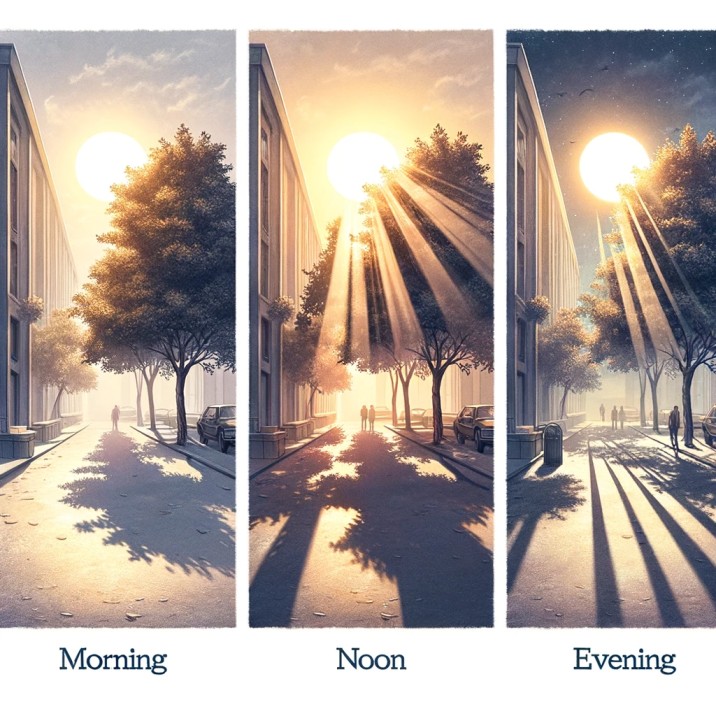We have answered the question Why does your shadow change during the length of the day? The change in the length and position of your shadow during the day is primarily due to the movement of the Earth in relation to the sun. As the Earth rotates on its axis, the angle of the sunlight hitting the Earth’s surface changes, which in turn affects the appearance of shadows.

Here’s a breakdown of how this works:
- Morning and Evening (Low Sun Angle): At sunrise and sunset, the sun is low on the horizon. During these times, sunlight hits objects at a shallow angle, causing shadows to be longer. Your shadow will be longest in the early morning and late afternoon because the sun is at its lowest angle in the sky.
- Midday (High Sun Angle): As the sun moves higher in the sky, the angle of sunlight becomes steeper. Around noon, when the sun is highest in the sky, it casts light from directly overhead. This results in shorter shadows, and at the exact moment of solar noon (which might not be the same as noon on the clock, depending on your location and the time of year), your shadow can be at its shortest.
- Shadow Direction: In addition to the length of the shadow, its direction also changes during the day. In the Northern Hemisphere, shadows will point towards the north at midday because the sun is in the southern part of the sky. The opposite is true in the Southern Hemisphere.
- Seasonal Changes: The Earth’s tilt also affects the angle of sunlight and the length of shadows. During summer, the sun is higher in the sky, resulting in shorter shadows at midday compared to winter, when the sun is lower in the sky and shadows are longer.
In essence, the changing length and direction of shadows over the course of a day are a visual representation of the Earth’s rotation and the varying angles at which sunlight reaches us. This phenomenon not only has practical applications, such as in sundials for timekeeping but also enhances our understanding of Earth’s movements in the solar system.

